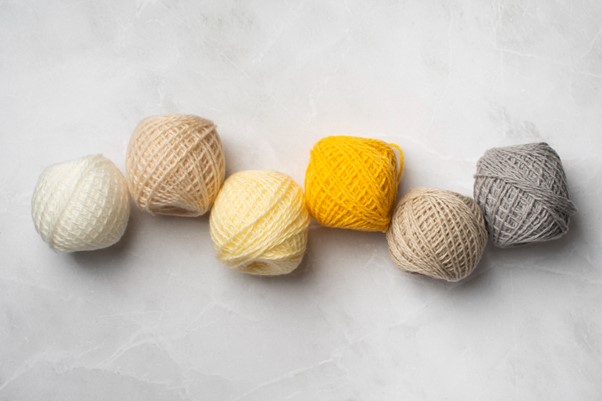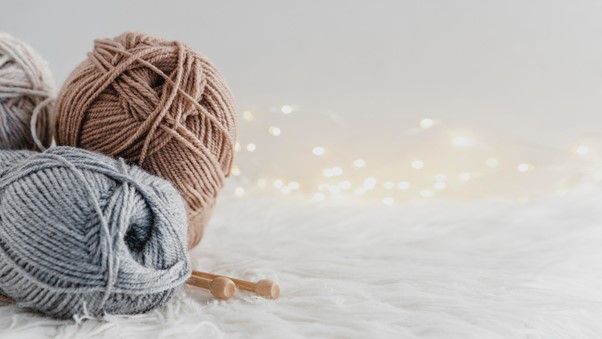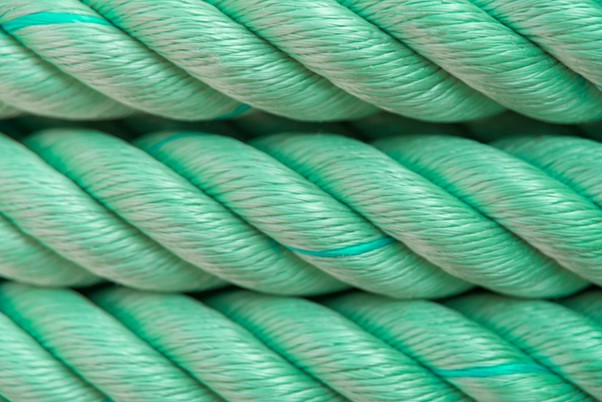How Many Fabrics Do You Know for Knitwear?
Published On: July 4, 2024 By: chen hui

To quote a phrase from Rabindranath Tagore – Fly Birds – “Let life be beautiful like summer flowers and death like autumn leaves.” The same is true for different fabrics for knitting. There are many fabrics for knitting and each of them is different with its features. Here we – Aung Crown, a custom beanie maker since 1998, will introduce many types of fabrics for knitwear for you to refer to when choosing or buying one.

Wool Fabrics
Wool fabrics are mainly made from sheep hair. The surface of sheep hair has a rich scale structure. Cashmere is well-developed with natural curl space. Wool hair has the best water-absorbing function than other fibers, but at the same time, wool hair also features the exclusion of water. Although wool fabric is poor in strength, it’s great for insulation, not easy to get dirt and wrinkle, which is the ideal fabric for clothing. Wool fabric is not affected by seasons and has wide applications. However, due to its stretchy feature, please pay attention to the washing and the best cleaning method is dry wash.
1. Cashmere
What is Cashmere? Cashmere is the plush hair combed from goat’s hair, a rare and precious animal fiber, and the highest quality fabric in the wool textile industry. The goats are spread in countries with a large temperature difference between day and night and a long day, such as China, Mongolia, Afghanistan, Turkey, Russia, etc. Due to the variable climate and the test of cold winter and hot summer, goat hair has a strong durability to the variable climate, and the common colors of cashmere are white, gray, purple, brown, etc.
Cashmere is similar to silk, thin, soft, smooth, and cozy to the touch, just like the touch of mink fur, which can give people a sense of elegance and belonging to high-quality woven fabrics.

2. Mohair
Mohair is made from Angolan goat hair, also called Angora goat wool. The 3 sources are Turkey, the United States, and South Africa. In general, premium mohair is gorgeous with luster, soft to the touch, and as elegant as silk.
Depending on the thickness, Mohair can be used for different purposes. From silk to linings to carpets, Mohair is an excellent choice for all. However, Mohair is poor moisture-proof, it’s not suggested to use it in rainy or damp weather.
3. Alpaca
Hair from Camelidae animals in the Rome region is called alpaca hair. In general, alpacas live mainly in high mountains with an altitude of over 3600 kilometers, such as South America, south-central Saul, Bolivia, etc. There are different colors for alpaca hair, such as brown, gray, light brown, light yellow, white, etc. In general, it’s common to use its original colors when using alpaca hair.
Alpaca hair also has a strong resistance to varying climates due to the places where they live. Because of this, alpaca hair is durable, lightweight, strong, and does not stain easily. The most special feature is that alpaca hair has a beautiful luster and is very soft to the touch with an even fiber. Alpaca is also a high-quality raw material for knitwear.
4. Angora rabbit hair
The rabbit hair especially means the hair of Angora rabbits. Angora rabbits are mainly found in China, France, Czechoslovakia, etc. It’s super pretty when dyed with bright dyes. Therefore, Angora rabbit hair is often used to knit hats, scarves, gloves, mittens, etc. When spinning it is usually mixed with 20 to 80% wool, cotton, and silk.

Cotton
Cotton belongs to plant fiber that has over 4000 years of history. With the development of cotton, it has been spread into China, Korea, and countries all over the world. Cotton is a type of middle-low-grade woven raw. Sometimes, it might be blended with wool fabric or other fabrics.
Cotton fiber is the fiber that covers the seed, also called seed coat or cotton for short. Each cotton seed has about 10,000 pieces of fiber, which can be divided into long cotton fibers and short cotton fibers. Short cotton fibers are often used as raw fibers to make artificial silk.
Cotton is one of the most widely used fibers in the world. Many clothes are made of cotton, such as kudzu cloth, coarse cloth, fine cloth, flannel, tannin (denim), corduroy, towel cloth, cotton wool, feather satin, etc.
What’s more, cotton is great for moisture-wicking and keeping warm, and it is very comfortable to wear. However, it has a general performance in heat resistance and light resistance; the recovery capacity is poor and it’s prone to shrinking.

Linen
The most representative linen fiber is hemp or flax and they are the earliest woven raw that was used by man. It is believed that linen was widely used in ancient Egypt. Linen fibers are bast fibers obtained from various hemp plants and their composition is the same as kapok – cellulose.
In general, wet linen fibers are strong, moisture-wicking, breathable, and absorb moisture quickly. This makes linen an excellent fabric for summer clothing. However, linen fibers are poor in insulation, do not have stretch, and are prone to wrinkling and breaking.

Cocoon Fiber
Cocoon fibers, also known as silk fibers, are continuous fibers extracted from cocoons and consist of silk gum and silk heart protein. There are two types of silkworms – domestic and wild. Next to wool, cocoon fiber has the best stretch and insulation. However, wet cocoon fibers have poor stretch and may be yellow under UV light after a long period of exposure.

Synthetic Fiber
Synthetic fibers use organic compounds as raw materials, which are treated by polymerization or condensation reactions to form an organic macromolecular chemical compound, which is one of the chemical fibers. The composability of synthetic fibers determines their properties. In general, the higher the composability, the better the fabric.
Common synthetic fabrics are polypropylene, polyester, polyurethane, chlorofiber, acrylic fabrics, etc.
Of all the synthetic fibers, acrylic fabrics have the most various types and are called the top three synthetic fibers with nylon and polyamide. Artificial fibers like acetate fiber and polyamide fiber are blended with natural fibers like cotton and wool which are the needed fabrics for making clothes, carpets, and woven threads.
Synthetic fibers are great for insulation and their properties are similar to wool fabrics.

Special Fibers
Special fibers are mineralogical fibers, including asbestos, metal yarns, microfibers, glass fibers, etc. All these can be made into new materials such as glue cloth, paper, leather, film, metal, and plastic pipes, which expand the usable material ranges.
After knowing the properties of these fabrics, we believe that you can choose a better knitwear. We hope that you can enjoy this content and hope it can help you.
